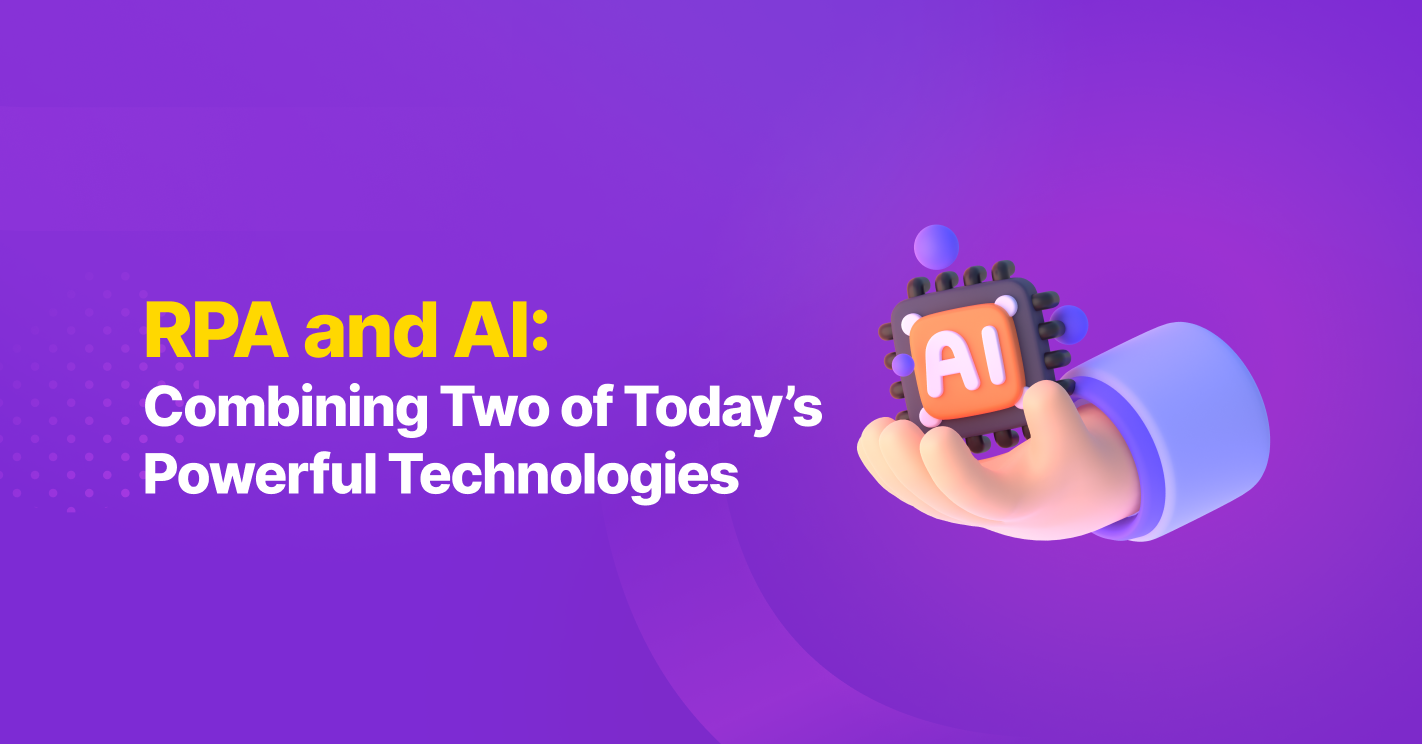Over the years, Robotic Process Automation (RPA) and Artificial Intelligence (AI) have enabled organizations to simplify business operations and processes. This transformation is the result of their distinct function and application, which allow a more seamless automation integration into daily workflows, hence maximizing efficiency.
Despite their own sets of differences and similarities, both technologies have proven to be valuable assets for organizations when it comes to handling complex and repetitive tasks. This article will explore how businesses can leverage RPA and AI to yield better results in today’s technologically advanced landscape.
RPA and AI: Understanding the Basics
RPA is a software technology that has the capability of simplifying business operations by automating mundane day-to-day tasks by imitating human behaviours.
It can mimic human interactions with computer systems and execute a series of predefined tasks, saving companies both time and money. Additionally, RPA eliminates human errors and boosts employee satisfaction and engagement, as it allows them to focus on more essential and strategic tasks.
AI, on the other hand, encompasses a broad spectrum of technologies within computer science. It focuses on creating intelligent machines that can learn and make decisions similar to humans. These technologies include machine learning, natural language processing, and computer vision. AI operates by harnessing large datasets and advanced algorithms to recognize patterns, make predictions, and continually enhance its performance over time.
Differences and Real-world Applications
Common actions executed by RPA include data entry and extraction, email management, and report generation, to name a few. Meanwhile, AI can create predictive analysis, recommendation systems, image and speech recognition, and autonomous decision-making. These capabilities make the two technologies extremely useful in healthcare, customer service, finance, and many more.
It is worth noting that RPA is limited to tasks that follow predefined rules and structured data, making it exceptionally well-suited for streamlining rule-based processes. However, it may face challenges with unstructured data or tasks that demand complex decision-making based on contextual understanding. This is where AI’s advanced cognitive abilities come into play to complement RPA’s functionalities.
RPA and AI: The Synergy
While RPA and AI offer unique benefits, their true potential shines when combined. For example, let’s consider a mortgage application process at a bank.
RPA manages data entry, document verification, and other routine tasks, while AI analyses applicants’ financial histories and credit scores for lending decisions. This synergy accelerates the entire process, reduces operational costs, and enhances customer satisfaction with faster responses.
Furthermore, the insights generated by AI-powered analytics instruct RPA bots to adapt to real-time processing. This dynamic approach ensures that businesses remain agile and responsive to changing market conditions.
Implementing RPA and AI in Manufacturing
In the realm of manufacturing, the fusion of AI and RPA has become a game-changer. Manufacturers have harnessed these technologies to enhance their production processes. AI-infused RPA systems deploy bots that diligently monitor equipment performance, enabling early anomaly detection and predictive maintenance to prevent disruptions.
These bots go beyond identifying issues; they also play a proactive role in minimizing downtime. Based on the insights gained from AI analytics, manufacturers can adjust their production schedules in real time, ensuring optimal resource utilization and maintaining smooth production lines, all while reducing costs and improving overall operational efficiency.
Challenges and Considerations
Despite the immense benefits of RPA and AI, there are challenges to be mindful of. Implementing these technologies requires a significant investment in terms of time, money, and human resources. Companies must also address data security and privacy concerns when automating sensitive processes.
Furthermore, it is essential to strike the right balance between automation and human interaction. While RPA and AI can handle many tasks, there are situations where human intervention and judgment remain indispensable.
Conclusion
The synergy between RPA and AI is already transforming business operations across industries. Not only are these technologies great tools for efficiency, but they are also catalysts for innovation. Through the power of automation and cognitive capabilities, businesses can streamline processes, enhance decision-making, and ultimately deliver better value to customers. While challenges exist, the potential rewards make the integration of RPA and AI a compelling proposition for businesses looking to thrive in the digital age.
Intrigued by the potential of RPA for your business? Feel free to contact and consult Mitrais, your trusted partner in RPA solutions, today. Let’s discuss your specific RPA needs and embark on a journey towards operational excellence and innovation. Your future success begins with a conversation – reach out to Mitrais now.











